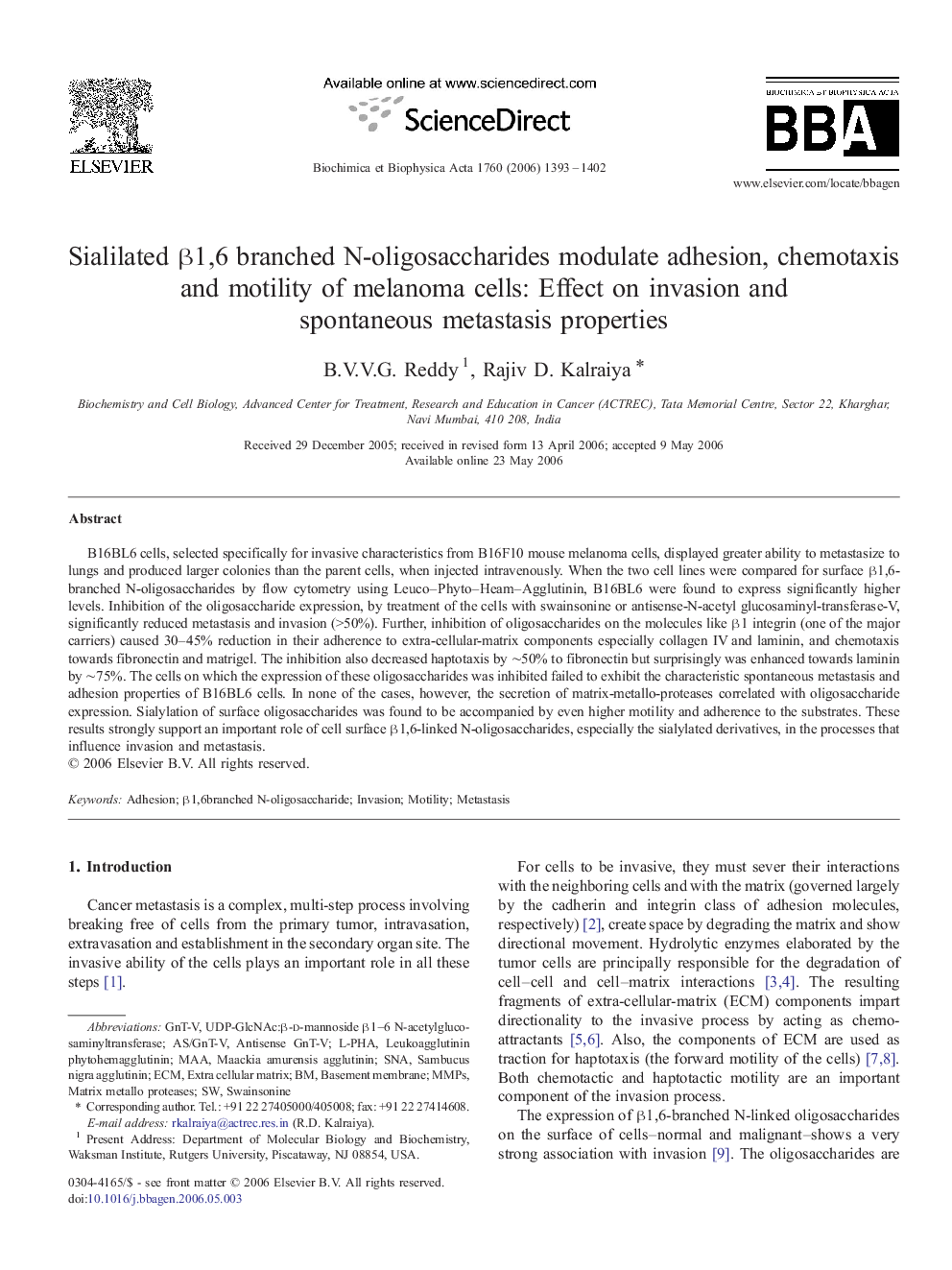| Article ID | Journal | Published Year | Pages | File Type |
|---|---|---|---|---|
| 1948733 | Biochimica et Biophysica Acta (BBA) - General Subjects | 2006 | 10 Pages |
B16BL6 cells, selected specifically for invasive characteristics from B16F10 mouse melanoma cells, displayed greater ability to metastasize to lungs and produced larger colonies than the parent cells, when injected intravenously. When the two cell lines were compared for surface β1,6-branched N-oligosaccharides by flow cytometry using Leuco–Phyto–Heam–Agglutinin, B16BL6 were found to express significantly higher levels. Inhibition of the oligosaccharide expression, by treatment of the cells with swainsonine or antisense-N-acetyl glucosaminyl-transferase-V, significantly reduced metastasis and invasion (>50%). Further, inhibition of oligosaccharides on the molecules like β1 integrin (one of the major carriers) caused 30–45% reduction in their adherence to extra-cellular-matrix components especially collagen IV and laminin, and chemotaxis towards fibronectin and matrigel. The inhibition also decreased haptotaxis by ∼50% to fibronectin but surprisingly was enhanced towards laminin by ∼75%. The cells on which the expression of these oligosaccharides was inhibited failed to exhibit the characteristic spontaneous metastasis and adhesion properties of B16BL6 cells. In none of the cases, however, the secretion of matrix-metallo-proteases correlated with oligosaccharide expression. Sialylation of surface oligosaccharides was found to be accompanied by even higher motility and adherence to the substrates. These results strongly support an important role of cell surface β1,6-linked N-oligosaccharides, especially the sialylated derivatives, in the processes that influence invasion and metastasis.
